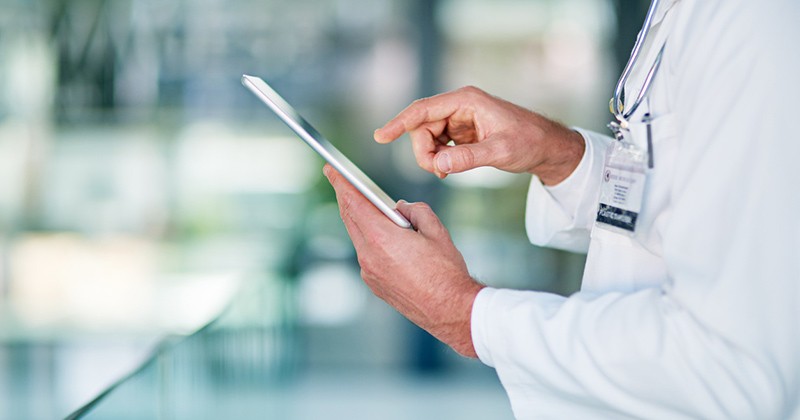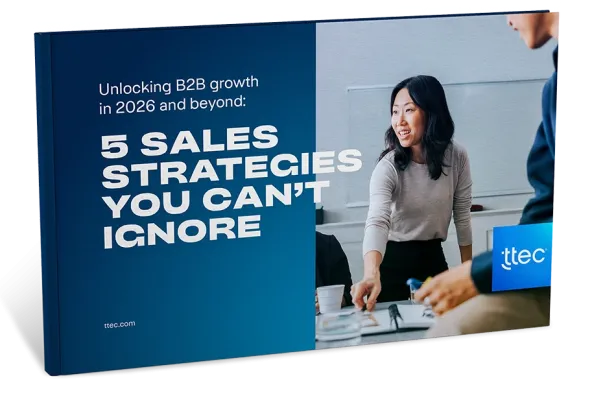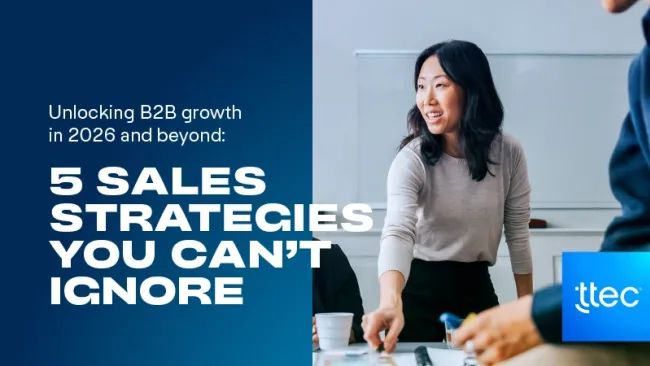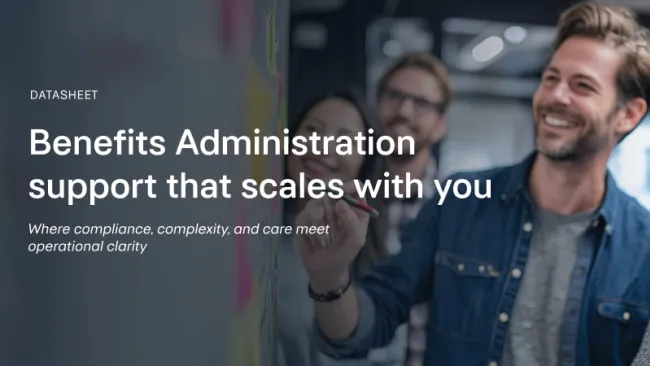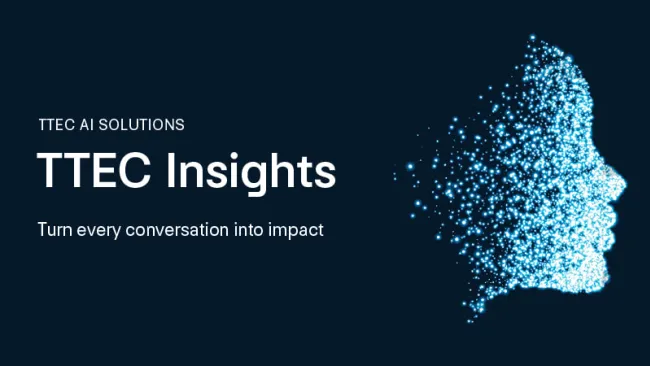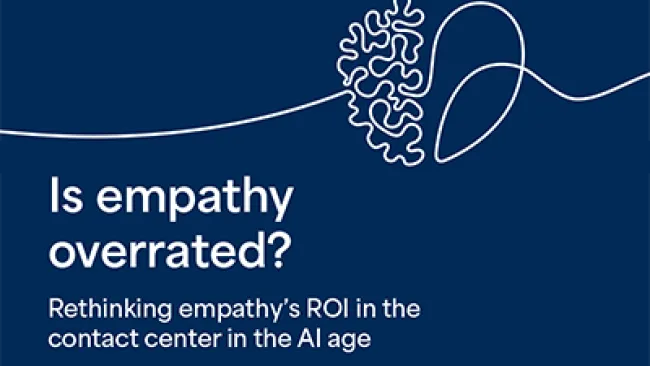In an age where Apple is reportedly working on an Apple Watch feature that checks blood sugar levels through the skin without needles and doctors offer personal consultations on demand via video, it’s no surprise that patients demand more convenient services.
In fact, 89 percent of healthcare providers say technology has changed patient expectations, according to Dell EMC. In addition to convenience, patients want faster and more personalized services. Many want 24/7 access to care services on all of their devices. To adapt to the changing landscape, providers and health insurers must adopt a more digitally focused mindset. Leveraging real-time data is one area where health organizations are beginning to make headway.
A need for personalized, speedy service
When businesses discuss the benefits of real-time data, it’s often to track broad trends. Automakers want to know in real time if there’s a pattern of dissatisfied customers calling about a certain issue. Marketers want to know in real time how an ad is performing in case they need to make changes. But in healthcare, patients care about real-time data that relates to one person—themselves.
“Healthcare will always be a story of one,” says Clay Heinz, vice president of care services at ttec. “We can start to look at trends, but at the end of the day, what matters is the individual and how well he or she can navigate the [healthcare] system.” Providing on-demand, individualized service at scale is difficult and costly, Heinz adds, but it’s also where opportunities exist to meet people’s needs.
Doug Melton, analytics business leader for Cigna’s Customer Engagement & Experience vertical, agrees that there are many opportunities for healthcare organizations to use real-time (or near real-time) data to create better personalized experiences for customers. He points to Cigna’s One Guide service as an example.
Launched in January 2017, the service provides Cigna members with individualized consultations via phone, mobile app, and click-to-chat for choosing their benefits, finding doctors, clinicians, and coaches, and reducing their health expenses. “One Guide allows us to look at a customer’s claims data, Rx, and lab info to identify what we call the ‘next best action’ to get users to take advantage of their benefits and seize control of their health,” Melton says. “This predictive technology also allows us to examine where customers prefer to get information, so that they’re more likely to engage.”
In the past, health insurance firms had only general information to share with members that they hoped was relevant. Thanks to a better consolidation of data and segmentation, companies like Cigna can tailor the information more efficiently. For example, the company can reach out to members who indicated that they’re first-time parents with suggestions for pediatricians in their area by referring them to the Healthy Pregnancy, Healthy Babies program.
Or, if a member contacts an associate to find out how to maximize his or her benefits, the associate can quickly pull up the member’s history and provide an informed recommendation. And if a member is researching a procedure, One Guide automatically pulls the information it has about the procedure into side-by-side comparisons to make it easier for the member to find the procedure with the best value. The purpose of Cigna One Guide is to make the “healthcare process easy and simple,” Melton says.
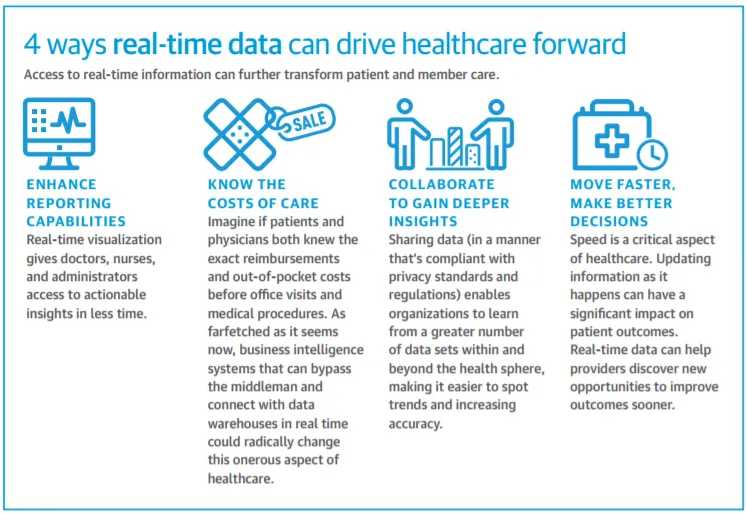
Also, the more often members use One Guide, the more personalized the communications become. For instance, One Guide collects information about users, such as which platform (email, chat, voice) they engage most with and takes that into consideration for future outreach. Customers are responding positively to the new service.
As of July 2017, Cigna had 1.3 million One Guide users (from a total of 15 million U.S. health plan members) and expects to exceed 4 million users by 2018. Next, the company plans to expand the One Guide service offerings beyond medical and pharmaceutical to include behavioral health, dental, and disability.
Real-time location data promises deeper insights
Having access to real-time location data can also be a critical component to a hospital’s success rate in both efficiency and cost savings. This is where healthcare technology comes into play.
Consider Verizon’s Intelligent Track and Trace, which gives healthcare and pharmaceutical companies a way to track assets from people to equipment. The three features of the Verizon Intelligent Track and Trace platform help address many of these needs. The Serialization & Traceability component provides supply chain and inventory management via RFID, barcode, and cloud services to monitor and track products.
The second component, Cold Chain, monitors temperature and location of shipments via sensors and the Verizon 4G LTE network. And the third feature, Intelligent Hospital, enables hospitals and companies to monitor equipment and manage staff and patient flows through in-building Wi-Fi access. Here’s how it works: Bluetooth low energy beacons can track the specified location of people or objects in real time within a certain area via transmitter tags. The tags can be worn by personnel or patients or be attached to hospital equipment.
Tagging patients’ bracelets, for example, can optimize patient flow by tracking the location of patients as they check in and go to their assigned room. Nurses can also be alerted if a patient wanders away from his or her room.
The system can also be used to manage wait times. As patients enter the ER, for instance, they can be given an asset tag or asked to download and open an app to enable administrators to keep track of how long patients have been waiting and the order they arrived.
“We’ve found that only about 12 percent of hospitals in the U.S. have any form of real-time location service technology solutions in place, but that’s rapidly changing as [hospital leaders] realize they can provide better patient care and operate more efficiently with the technology,” says Tom Villa, director of product development at Verizon Wireless.
Villa declined to name the hospitals Verizon is working with, but shared a few tips on how companies can get the most benefits from the technology investment. “Just understanding your needs is the first barrier,” Villa says. “I’ve been to 40 hospitals in six months and the first question I ask is, ‘What are you trying to solve for?’ If they give me a blank stare, then I know it’ll be a long conversation.” Second, it’s important to have a plan for how the new solution will integrate with the organization’s existing systems and whether the time and expense are justified. “This isn’t something you decide to do one day without thorough planning,” he adds.
Healthcare organizations have only begun to leverage the benefits of real-time data and other technology advances. But in an industry that hinges on data, adopting faster and more efficient ways of collecting and processing data is necessary to solve the challenges of 21st century healthcare.

